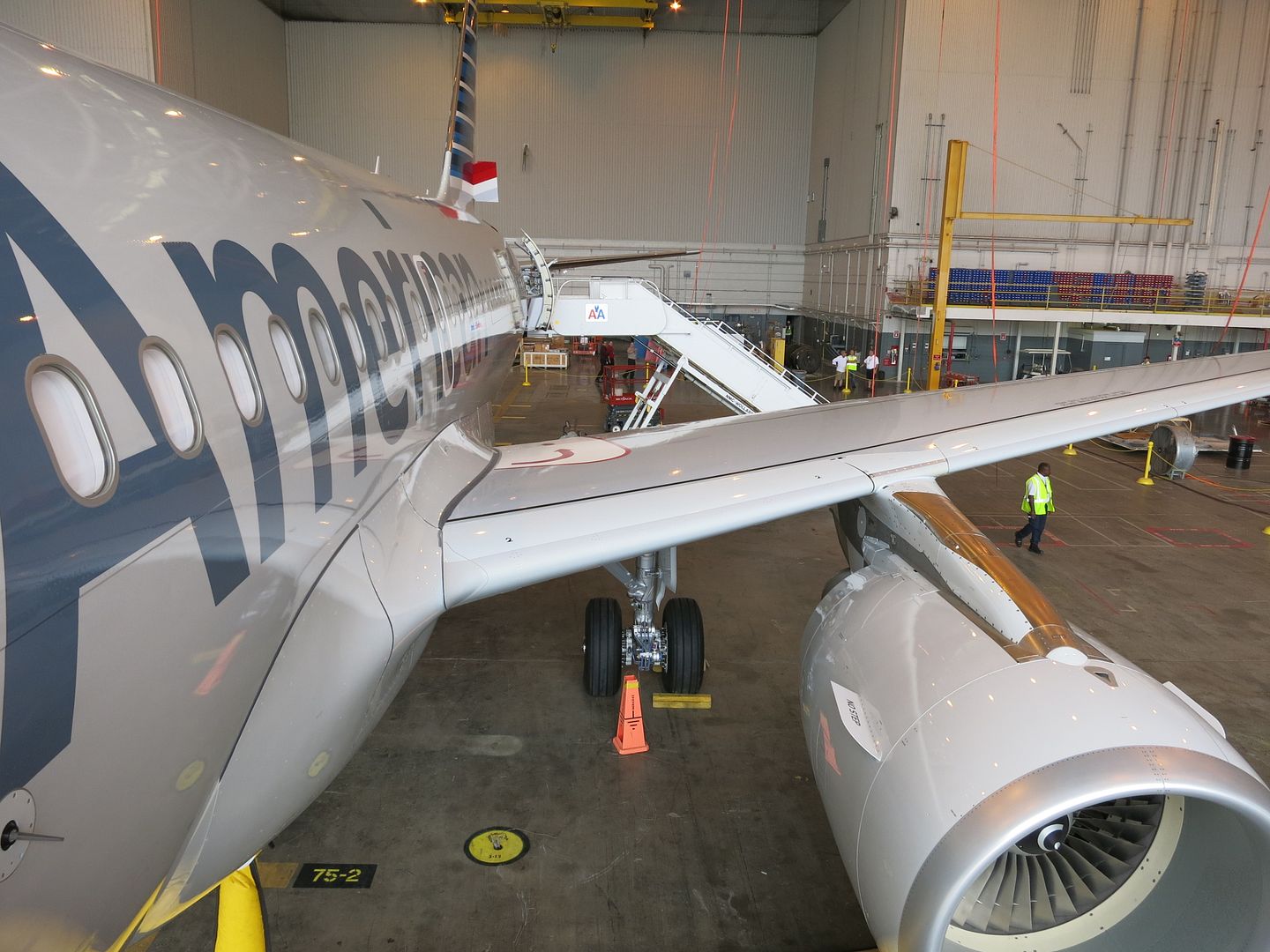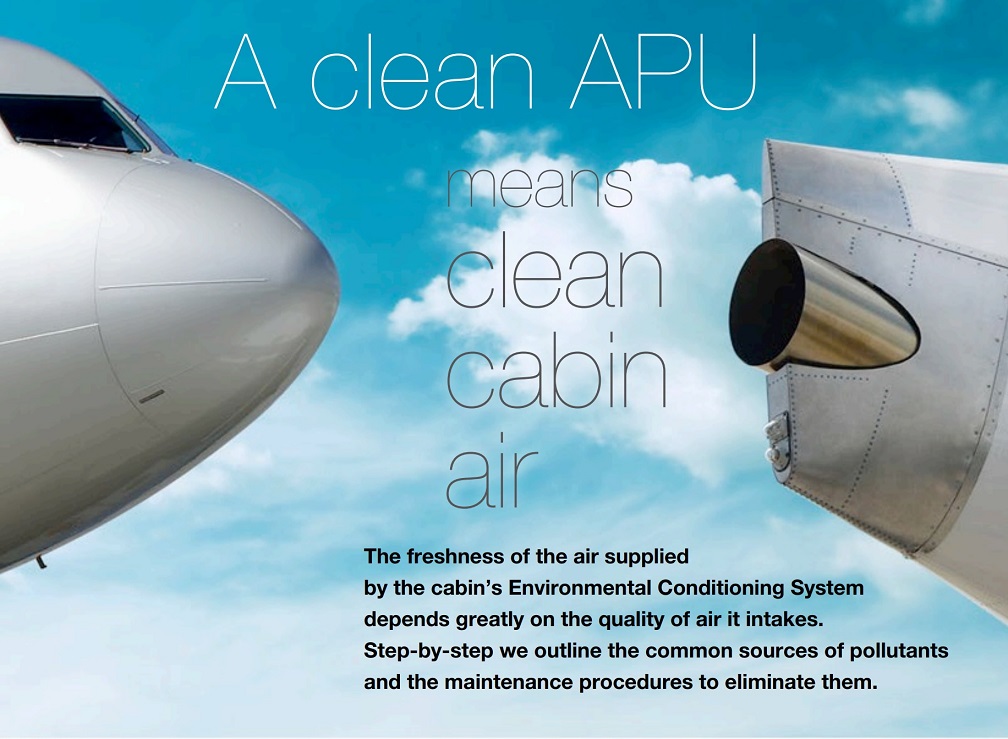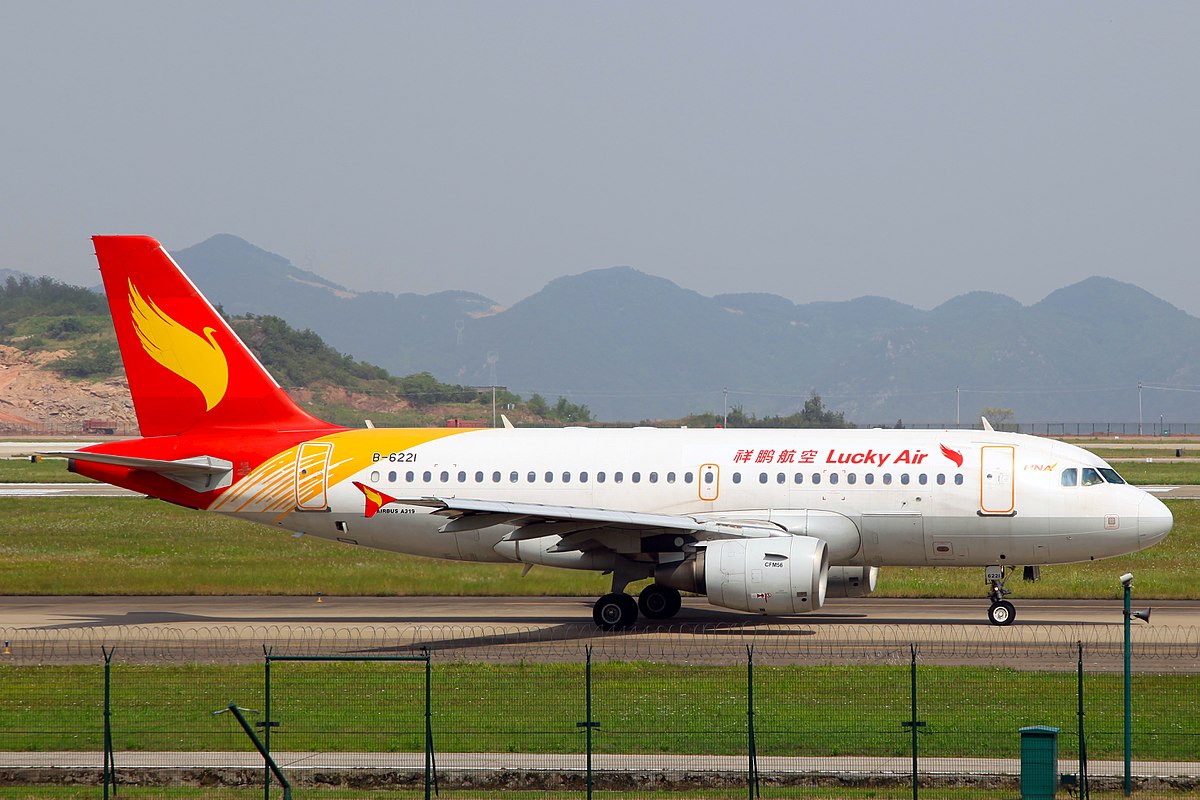On July 17, 2015 a Spirit Airlines Airbus A319 flying from Chicago O’Hare to Boston is said to have reported a strong smell of dirty socks as the plane began its descent. There were apparently issues with the cockpit crew communicating with air traffic control, including acknowledging the correct handoff frequency. The first officer put on his oxygen mask, “recovered a bit and recognized that the captain had sunk into his seat and was incapacitated.” The first officer then placed a mask on the captain and they landed the aircraft — although the flight crew “did not recall how they managed to land or taxi the aircraft.”
The aircraft’s captain was diagnosed with triorthocresyl phosphate poisoning and internal bleeding and reported several symptoms for days, and had difficulty upon returning to duty.
[F]ollowing the fume event, after the captain returned to work following the fume event, the collegues noticed that the captain became increasingly dithering and unreliable. The captain lost eye and hand coordination as well as threedimensional perceiption. One day the captain parked his aircraft in such a way, that the crew taking the aircraft over the next day feared the captain might have been intoxicated.
Fifty days after the flight incident he died of a heart attack which is suspected to be related to the toxins from the plane.
Both pilots of a Germanwings Airbus A319 were nearly incapacitated by fumes in the cockpit on December 19, 2010 on approach to Cologne, Germany.
On January 28, 2018 a Spirit Airlines Airbus A320 that same aircraft experienced a fume event where crew and passengers vomited.
On October 1 2018 a Spirit Airlines Airbus A319 experienced fumes in the passenger cabin shortly after departure from Fort Lauderdale. The crew decided to continue to Guayaquil, Ecuador. At least six passengers required medical care on arrival, and all of the flight attendants were taken to the hospital.
[A] number of passengers began to complain about feeling sick due to an odour described as rotten smell by some or dirty old socks by others, all three cabin crew began to feel unwell, too. The flight crew was notified of the fumes however decided to continue the flight to Guayaquil. Medlink was called to provide first medical assistance to passengers and cabin crew, the passengers were offered oxygen. Passengers reported nausea, burning eyes, upset stomach and headache. One of the flight attendants began to vomit, another one was shaking and nearly became unconscious, the third complained about nausea and headache with burning eyes. Rashes developed.
On April 2, 2019, an American Airlines Airbus A321 diverted to Wilmington, North Carolina reporting fumes in the cockpit.

American Airlines Airbus A319
On April 17, 2019, an Air Canada Rouge Airbus A319 returned to Toronto due to an odor in the cockpit. Then on April 23, 2019, an Air Canada Rouge Airbus A319 reported fumes in the cockpit, pilots donned oxygen masks, and the aircraft diverted to Raleigh, North Carolina.
On May 3, 2019, a Spirit Airlines Airbus A321 returned to Los Angeles 40 minutes after departure due to an odor in the cockpit and the cabin, and a passenger was hospitalized.
On June 8, 2019, British Airways pilots of an Airbus A321 donned their oxygen masks due to fumes on board while descending into Copenhagen. The same aircraft had fume events June 15 and June 23.
On June 29, 2019 a Spirit Airlines Airbus A320 stopped its climb out and returned to Atlantic City due to fumes on board, and crew were taken to the hospital as a precaution.
On July 7, 2019 a Spirit Airlines Airbus A321 had reported fumes in the cabin throughout flight from Tampa to Orlando. Some members of the flight crew were hospitalized on arrival. The airline concluded that “too much oil was used to service the auxiliary power unit.”
In 2013 Airbus warned of fume events from failure to clean environmental systems following leaks, and suggesting “A clean APU means clean cabin air.”
Air supplied by the Environmental Conditioning System (ECS) can be contaminated by the unavoidable ingestion of environmental pollutants such as industrial pollution as well as engine exhaust pollution from the many vehicles and aircraft operating in the airport environment.
Since the ECS is supplied with air from the Auxiliary Power Unit (APU), engine bleed system or Ground Power Units (GPU), there is also a possibility of contamination from these.
One source of in-service contamination events reported on the A320 Family fleet is the APU. This results from either internal leakage or re-ingestion of oil following external leakage. It is worth noting that a noticeable cabin odour can be generated from ingesting only a very small amount of oil.

There are scores of Airbus narrowbody fume incidents across diverse carriers — including some fume occurrences leading to flight diversions and hospitalized passengers and crew — across JetBlue, Austrian, British Airways, American Airlines, Spirit, Lufthansa, easyJet, Aer Lingus, Jetstar, Germanwings, Turkish, Air France, Delta and others.
Dangerous fume events are rare overall. Over 8000 Airbus A320 family aircraft have been delivered. Most operate multiple flights per day. So these are outlier events.

Lucky Air Airbus A319-112 B-6221 by byeangel from Tsingtao, China via Wikimedia Commons
On the other hand the majority of reported fume events in recent times have seemed to occur in Airbus narrowbodies. Airbus, airlines, the FAA and international regulators are familiar with and have paid attention to these events and yet they keep occurring. We don’t hear about them as a systematic issue, and I have to wonder if Airbus is doing enough, proactively enough, about it?


Lord knows if this was happening on a Boeing aircraft it would be a top story right now.
Ground all A320s
Is Boeing on a stealth campaign against Airbus as a form of attempted retaliation for the Boeing 737 max situation damaging the Boeing brand, or are its lobbyists doing things only openly nowadays?
@GUWonder: I sort of wonder the same thing. I’ve seen a lot more negative Airbus articles lately.
Airlines need to clean the APUs regularly. What’s their current procedure?
@GUWonder – I have no idea. I have never to the best of my knowledge had contact with lobbyists from either Boeing or Airbus. (I have also never taken payment for any sort of service or received any sort of gift from either, though I received a tour of the 737 factory and the customer experience center as part of the oneworld MegaDO in 2012, and I’ve attended a Singapore Airlines 777 delivery in 2013 as a guest of Singapore which was highlighting updates to its cabins.)
Yeah, definitely a post sponsored by Boeing.
But then Boeing states that fumes are not a problem to worry about:
> Despite this established research to the contrary, a number of advocacy groups continue to promote the idea that exposure to trace levels of organophosphate contamination — far below published standards — presents a risk to human health. They are very vocal and, from time to time, the media picks up and publishes their stories. However, because the science has not changed, Boeing has not changed its position that cabin air is safe to breathe – a position that is firmly based on the reliable scientific data currently available. < https://www.ktnv.com/news/contact-13/fumes-in-flight-is-there-a-risk-for-airline-crews-and-passengers-
Events over the past 4 weeks (that I could find):
* Boeing 777-200 over Atlantic on Jul 14th 2019, fumes on board https://www.aeroinside.com/item/13409/british-airways-b772-over-atlantic-on-jul-14th-2019-fumes-on-board
* Boeing 777-200 at London on Jul 3rd 2019, fumes in cockpit https://www.aeroinside.com/item/13351/british-airways-b772-at-london-on-jul-3rd-2019-fumes-in-cockpit
* Boeing 777-200 near Gander on Jun 22nd 2019, smell of smoke, then heat and mist https://www.aeroinside.com/item/13324/british-airways-b772-near-gander-on-jun-22nd-2019-smell-of-smoke-then-heat-and-mist
Also of interest:
* "at least two lawsuits against Boeing Co. brought by five Alaska Air Group Inc. flight attendants who fell ill while working on Boeing 737s. In some cases, the employee is unable to return to work, according to the lawsuits, which were filed in Chicago." https://fortune.com/2017/08/09/dangerous-cabin-fumes-planes/
* “Fume events” happen an estimated 2.6 times a day https://fortune.com/2017/08/09/dangerous-cabin-fumes-planes/
* "a Boeing 737 captain who said he experienced a fume event earlier this year while commanding a flight to Chicago. “We took off from Orlando and just after liftoff … I looked at my first officer and she looked back at me holding her hand up to her nose,” he said. Tajer said he strapped on his oxygen mask and considered returning to the airport but the fumes dissipated above 7,000 feet and they decided to continue. A similar odor returned during the descent into Chicago and the 737 was removed from service, he said." https://fortune.com/2017/08/09/dangerous-cabin-fumes-planes/
I don’t think there’s any conspiracy by Boeing or its fans. These events have been happening for a while; Spirit, at least, takes them very seriously and has been aggressively tracking them. The pilot community has known about, and worried about, this issue for a while. It’s not new.
The 737MAX events were outlier too and those planes are grounded. If a fume event can sicken these many people when it occurs, and in the one case, lead to the loss of a Captain’s life, then these planes need to be investigated and grounded as well.
I have no problem grounding the 737MAX, it’s the right thing to do because it’s problems were caused by an obvious engineering design oversight and need to be corrected ASAP…but such caution should apply to Airbus as well.
Hmmmm….SWISS has a large Airbus fleet and have had no problems. Perhaps their maintenance is performed with Swiss precision….
Swiss isn’t immue:
Incident: Swiss A321 near Geneva on Oct 2nd 2018, smell of burnt rubber
By Simon Hradecky, created Tuesday, Oct 16th 2018 16:09Z, last updated Tuesday, Oct 16th 2018 16:09Z
A Swiss International Airlines Airbus A321-200, registration HB-IOC performing flight LX-2110 from Zurich (Switzerland) to Malaga,SP (Spain) with an unknown number of passengers and 7 crew, was climbing through FL290 out of Zurich about 15nm west of Geneva (Switzerland) when the crew decided to return to Zurich reporting the smell of burnt rubber on board. The aircraft landed safely on Zurich’s runway 16 about 50 minutes after departure.
Switzerland’s SUST reported the occurrence was rated a serious incident and is being investigated by the SUSne:
Hey Jake,
of which “established research” are you talking about which states that fume events are NOT posing a risk for human health?
Question for Doug and Austin.
Have any Airbus aircraft crashed because of that smell?
No? Ok, so then that’s why no A319s or A320s have been grounded. And this isn’t a “top story.”
This is hardly something new. There are hundreds of Fume Events that happen every year now around the world on both Boeing and Airbus aircraft. These are both due to defective bleed air designed aircraft. You only hear more about Airbus planes and Spirit in particular since the only other real factor that causes an airline to have more Fume Events than others on bleed air aircraft is the reduced cost-cutting on outsourced C-Check Engine Overhauls and the Engine Wet Seal replacement time cycles. Also, most Low-Cost carriers in North American utilize the Airbus fleet. Spirit is a ULCC cost-cutting airline in this area. Therefore, they have the most events in North America. American’s US Airways fleet is a close second since they have ULCC maintenance being done on those aircraft at American. Nothing is being done, has not been done and will not be done now going on over 60 years that it has been taking place. Aircraft manufacturers, Airline Management, Arline Unions, Legislators, FAA, NTSB, the Courts, Workers Comp Insurance companies and IME doctors are all onboard in fully complicit collusion with the long-standing policy of deny, lie, hide and conceal policy when it comes to dealing with Fume Events.
The only shred of hope any of us have for change is in the hands of the filing at the High Criminal Court in the Hague and the pending case precedent being filed against Airbus in the French legal system. Other than that I really do not expect to see any real meaningful change anytime soon.
This is not a Boeing problem or an Airbus problem. It is a long-standing well-known bleed air aircraft worldwide aviation problem. Just as the 737MAX is a defective flawed design. So is the bleed air aircraft in aviation. They are a long time known flawed design which is in wide circulation that is too costly to fix. This is the Inconvenient Truth of modern-day aviation. It is a longtime problem which nobody is in a big hurry to fix anytime soon. Every year Pilots and Flight Attendants die, become permanently disabled, and crew, as well as passengers, become chronically ill from the toxic cabin air. However, nobody really could careless, unfortunately. It has just become a daily commonplace accepted part of aviation nowadays that we all have just come to live with now as our new normal.
Porter Lafayette
Aviation Travel Writer: The Flight Times Blog
FUME EVENT: “Aviation’s Biggest Lie”
https://aviationtravelwriter.com/
https://www.amazon.com/FUME-EVENT-Aviations-Biggest-Lie/dp/1365297977
Is there a way to analyze the composition of the air using some sort of calibrated instruments?
Are air samples getting captured while in flight? Air should be sampled from good flights as well as bad flights.
Could it be originating from the lavatory. Perhaps Spirit has the same passenger(s) on every flight with an incident. That would explain why the other airlines seem to be immune.
Gary, that’s a lazy story. Very poor research. Check again and see that Boeing has the same issue.
But… fumes are a problem generally and it’s a great story. But by only mentioning one manufacturer, this story is losing all credibility.
What a poor job covering such an important topic, Gary.
@tim – bleed air has been an issue for 70 years, of course Boeing “has had the same issue” but the frequent major issues of bleed air causing diversions and sickness have largely been an airbus narrowbody in recent years.
Airbus is full of it. These events are happening at altitude not on the ground when the APU is used to provide bleed air. This is an industry wide issue. While the events are rare, they are not unheard of and the effects are life changing and in some cases ending.
Thank you for addressing a serious concern that affects crew & passengers. Crew reports fume events all the time but reports disappear. Our reporting system is flawed. We didn’t have this problem 5 years ago like we do today. What’s changed? Additives in fuel. IAE engine. Cost cutting. I believe the IAE engine is at the heart of this problem. Search NASA database for more reports. Airlines can’t make NASA reports disappear the same way they do with FAA reports.
Gary, how concerned should the regular flyer be about this? I have always felt that flying is one of the safest modes of transportation, but the fumes have never come into my analysis.
@gary – what a poor statement to make:
“Dangerous fume events are rare overall. Over 8000 Airbus A320 family aircraft have been delivered. Most operate multiple flights per day. So these are outlier events.”
infrequent events or not they’re still potentially deadly incidents. Incapacitated pilots is a dire situation and it seems there’s no guarantee this won’t happen on every single flight. It would seem that Airbus should be under extreme scrutiny to fix the problem, and soon. Do the plane models having the problem more often need to be removed from service until it’s fixed?
Thank you @Gary. Aerotoxic syndrome (aka a “fume event”) is real. In many cases the symptoms are neurological but the can be as simple as pulmonary problems — asthma, coughs. There’s a reason I wear a charcoal mask on long flights, they make a difference.
Bleed air is a disgrace. The *only* plane without bleed air is the B 787. Not using bleed air is an option on the Airbus 350 but I don’t know how widespread that installation is.
Nothing new here, sad to say. Been an industry issue for ever.
NOT an Airbus issue either, Boeings are as bad, although some engines are known to be worse or more susceptible than others. It’s a maintenance issue –engine seals. The APU stuff is largely a red herring.
A Spirit flight from Tampa to Orlando? I don’t think so.
I am a subscriber to daily updates of Air Incidents reported worldwide on a daily basis. I can confirm that there is a disproportionately high occurrence of fume/smoke in cockpit incidents being reported on an almost daily basis for certain versions of the A320 family. See https://www.aeroinside.com/ and sign up for these notices. They are most interesting for any aviation enthusiasts and professionals. These fume problems during flight are almost undoubtedly a result of oil/hydraulic fluid contamination of bleed air from engines on the aircraft in question, and not just of carriers based in the USA. Further investigation seems to more specifically implicate A320 aircraft with the V2500 engine option, as pressures in the compressors of the these engine are considerably higher than similar aircraft with other engine options. In fact, subscribers will be interested to know that there is a documentary about a Lufthansa A320 whose aircrew were incapacitated by a fume event; at least 2 or 3 of the staff members concerned were permanently boarded on Medical Grounds and if I am not mistaken the Captain of this flight actually died of a condition suspected to be related to the occurrence. Legal recourse has been taken by some of the concerned aircrew affected in this particular incident and the matter appears to be under further investigation. It is surprising that this issue has not been addressed my thoroughly by Airbus in particular and the International Aviation Safety Regulators in the countries concerned.